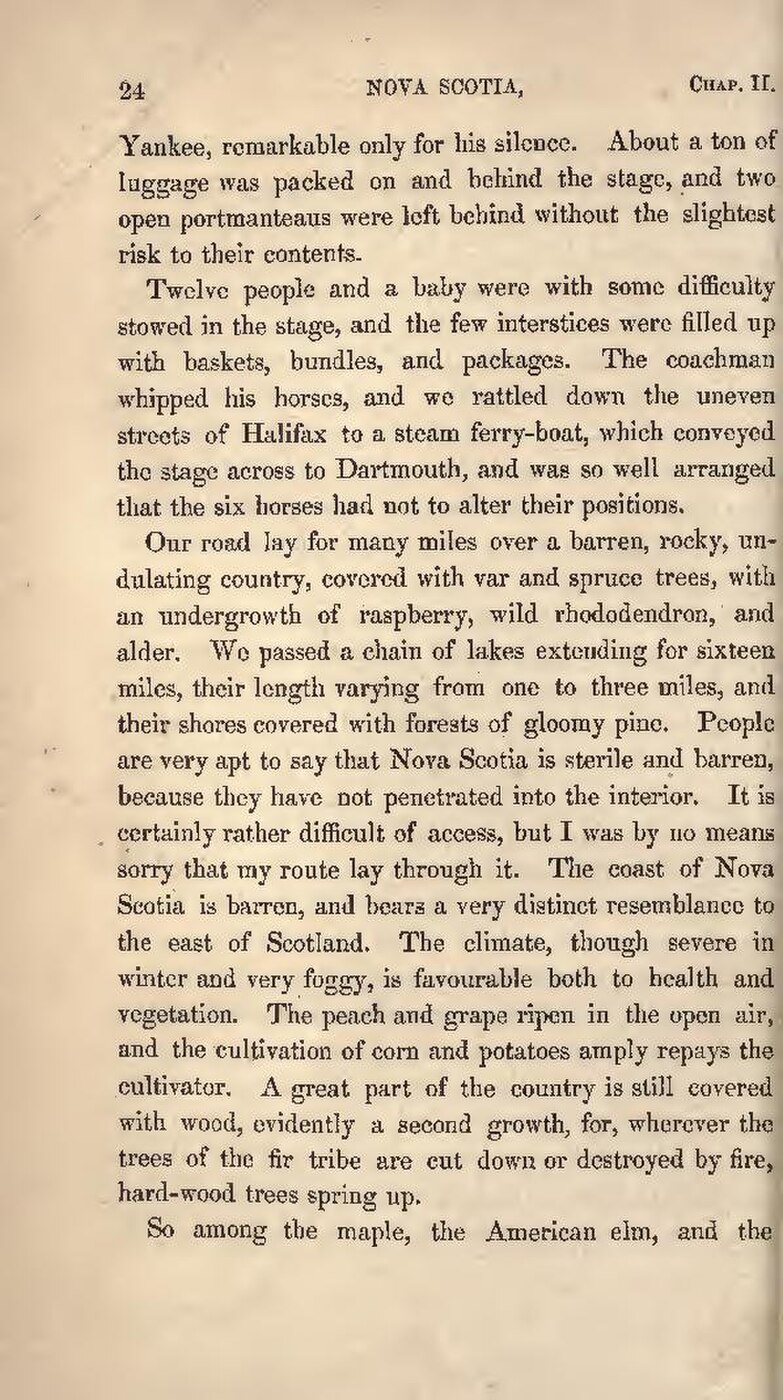Yankee, remarkable only for his silence. About a ton of luggage was packed on and behind the stage, and two open portmanteaus were left behind without the slightest risk to their contents.
Twelve people and a baby were with some difficulty stowed in the stage, and the few interstices were filled up with baskets, bundles, and packages. The coachman whipped his horses, and we rattled down the uneven streets of Halifax to a steam ferry-boat, which conveyed the stage across to Dartmouth, and was so well arranged that the six horses had not to alter their positions.
Our road lay for many miles over a barren, rocky, undulating country, covered with var and spruce trees, with an undergrowth of raspberry, wild rhododendron, and alder. We passed a chain of lakes extending for sixteen miles, their length varying from one to three miles, and their shores covered with forests of gloomy pine. People are very apt to say that Nova Scotia is sterile and barren, because they have not penetrated into the interior. It is certainly rather difficult of access, but I was by no means sorry that my route lay through it. The coast of Nova Scotia is barren, and bears a very distinct resemblance to the east of Scotland. The climate, though severe in winter and very foggy, is favourable both to health and vegetation. The peach and grape ripen in the open air, and the cultivation of corn and potatoes amply repays the cultivator. A great part of the country is still covered with wood, evidently a second growth, for, wherever the trees of the fir tribe are cut down or destroyed by fire, hard-wood trees spring up.
So among the maple, the American elm, and the
